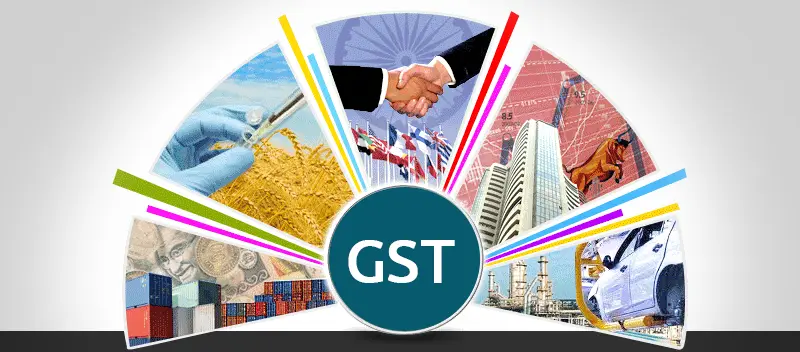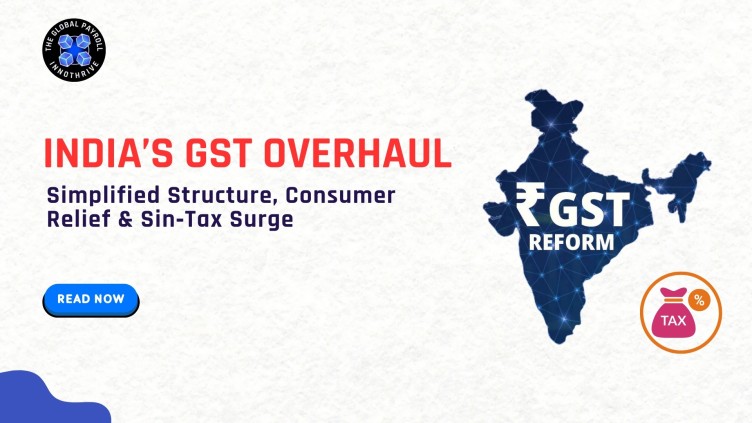India’s GST Overhaul: Simplified Structure, Consumer Relief & Sin‑Tax Surge
1. Executive Summary
The GST Council has carried out the most significant indirect tax reform in nearly a decade. The previous four slab system (5%, 12%, 18%, 28%) has been rationalized into a cleaner structure:
- 5% “merit” rate – for everyday essentials
- 18% standard ratefor general goods and services
- 40% "demerit/sin" rate – for luxury, harmful, and sin goods Additionally, individual life and health insurance policies are now GST-exempt.
This reform aims to simplify compliance, reduce prices for consumers, boost demand (especially ahead of festivals), and strategically discourage consumption of harmful goods.
2. Fiscal Impact & Implementation
While the government anticipates a revenue loss of ₹48,000 crore overall, this is considered manageable relative to the broader economic benefits like demand stimulation and reduced inflation pressure (estimated up to 1.1 percentage points).
Effective Date: September 22, 2025 (the first day of Navratri), except for some sin goods where the shift may follow later, based on compensation cess obligations.

3. Industry Wise Tax Impact Table
| Industry / Category | Previous GST Rate(s) | New GST Rate | Impact Summary |
|---|---|---|---|
| Daily essentials (soap, shampoo, toothpaste, hair oil, utensils, feeding bottles, diapers, namkeen, chocolates, noodles) | 12–18% | 5% | Significant cost reduction increases affordability and demand. |
| Food staples (UHT milk, paneer, Indian breads like roti/paratha) | 5% or 12% | Nil | Lifeline relief for households. |
| Healthcare & drugs (life‑saving medicines, medical devices, spectacles, diagnostics) | 12–18% | 5% or Nil | Makes critical healthcare and equipment more accessible. |
| Insurance (individual life & health) | 18% | Nil | Major affordability gain and coverage expansion. |
| Education materials (books, pencils, exercise notebooks, maps) | 12% | Nil | Relief for educational spending. |
| Agriculture & farming equipment (tractors, drip systems, seeds, handicrafts, renewable equipment) | 12–18% | 5% | Boosts these sectors through reduced taxation. |
| Construction & building (cement) | 28% | 18% | Moderate tax relief for the sector. |
| Automobile & auto parts (small cars ≤350 cc, bikes ≤350 cc, three-wheelers, buses, ambulances, small trucks, all auto parts) | 28% | 18% | Reduced tax to boost automotive and accessory demand. |
| Electronics & appliances (ACs, TVs >32”, dishwashers, monitors, projectors) | 28% | 18% | Significant relief for consumers. |
| Luxury / sin goods (pan masala, cigarettes, gutkha, chews, sugary & caffeinated drinks, luxury cars, motorcycles >350 cc, yachts, personal aircraft, gambling) | 28% or with Compensation Cess | 40% | Disincentive pricing for harmful/luxury items; conversion to GST‑only base enhances tax simplicity. |
4. Strategic Implications for Businesses
- Consumer goods companies (FMCG, dairy, toiletries) may experience volume growth due to lower GST.
- Automotive and appliance manufacturers could see demand stimulation ahead of Diwali.
- Healthcare providers, educators, and insurers gain through cost reductions and extended coverage.
- Luxury segments and sin goods producers will face reduced demand due to steep taxation.
- Agri equipment and rural-focused manufacturers may benefit from lower tax burden stimulating rural purchasing.

5. Communication Tips for Businesses
- Highlight cost savings in marketing (e.g., “Now just 5% GST on XYZ product”).
- Reassess pricing strategies immediately to remain competitive.
- Prepare for demand boost The festive period—optimize inventory and logistics.
- Luxury goods producers might consider premium positioning or repositioning due to reduced affordability.
- Agritech and green energy suppliers can push outreach emphasizing lower taxation.
Conclusion
The GST reform is a milestone—simplifying the tax structure, cutting costs for millions, and encouraging healthier consumption patterns while maintaining revenue balance. It’s a win for compliance, consumers, and businesses ready to realign with this new landscape.












